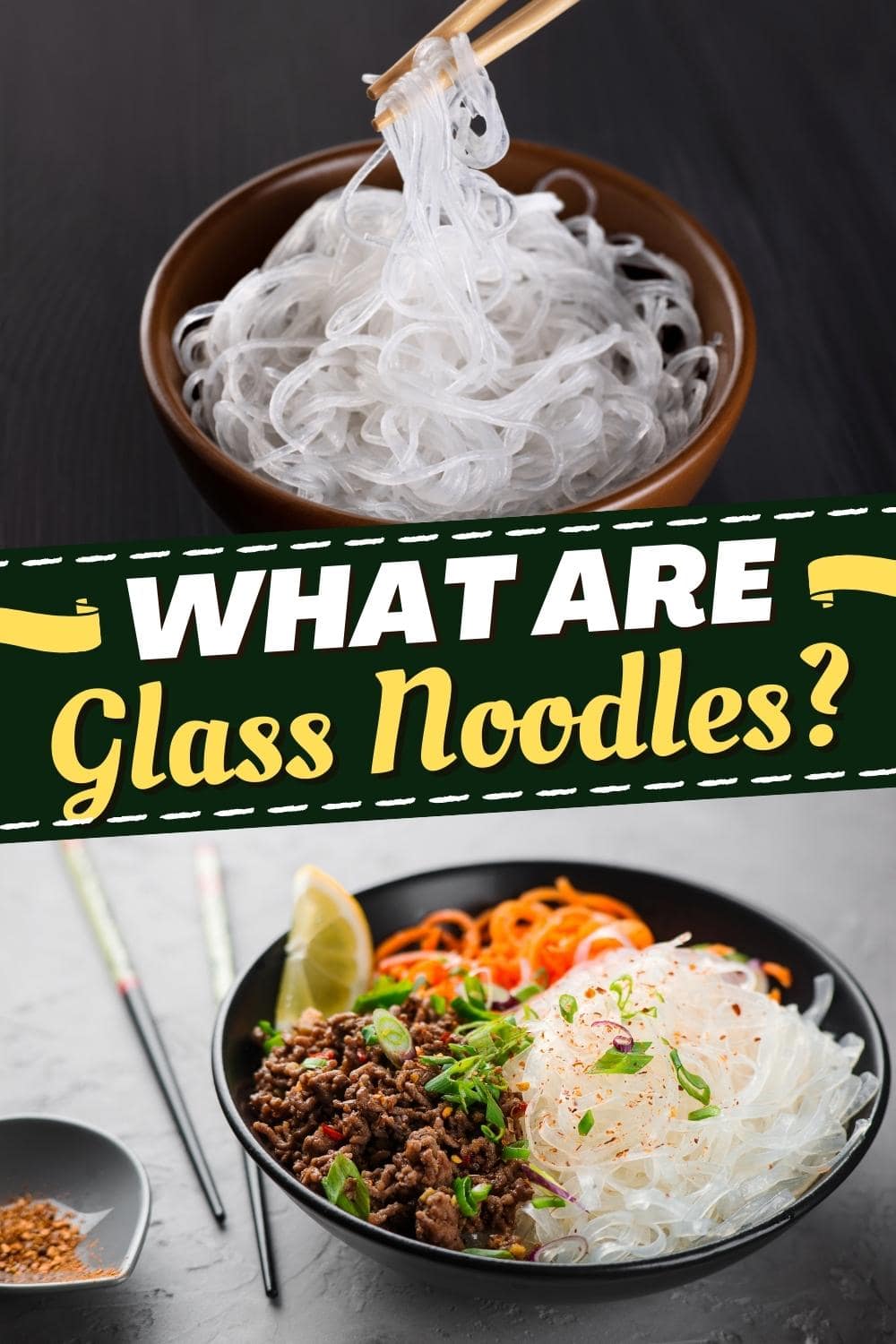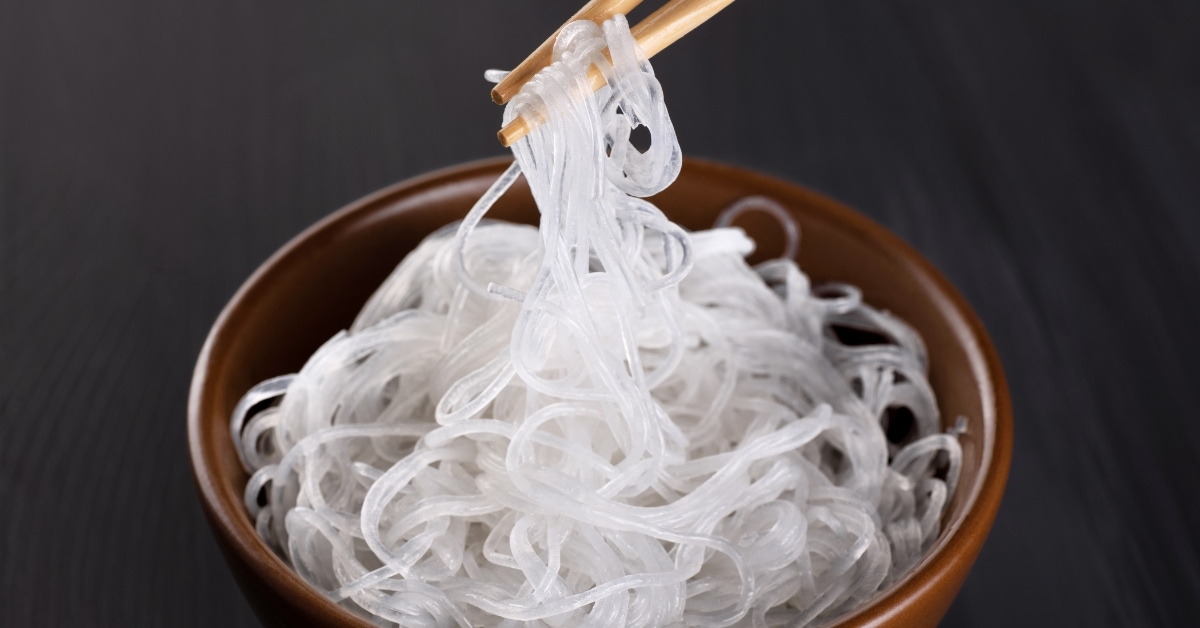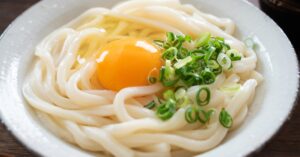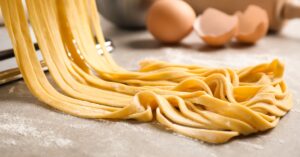What are glass noodles? And why the word glass?
If you are new to these noodles, you probably have many questions. And rightfully so!
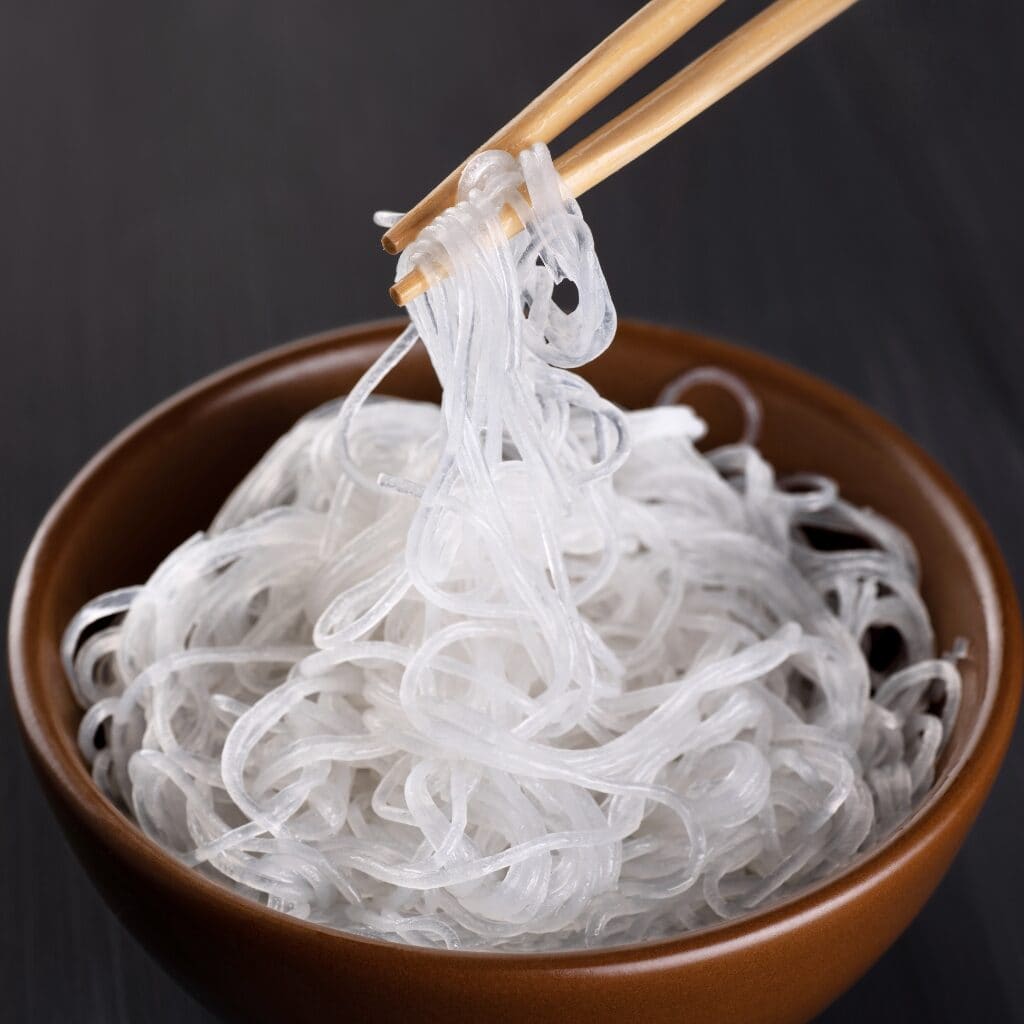
There are a dizzying number of noodles available on the market. Let alone types of Asian noodles.
With their intriguing texture and versatility, glass noodles are popular in Asian cuisine.
From stir-fry to salad, glass noodles have endless uses. You will often find them in Chinese, Korean, and Japanese cuisine.
But before we get into that… let’s look more closely at glass noodles.
What are Glass Noodles?
Glass noodles are gelatinous Asian noodles made with starch and water. The two ingredients get mixed, then pulled, washed, stretched, and shaped.
The color of the noodles can range from white to brown.
Uncooked, these noodles look opaque. Once you cook them, the starches absorb the water. And they become transparent.
So they look… well, glassy.
A common misconception is they are only one type of noodle. Rather, glass noodles include many varieties.
The difference between noodles depends on the starch.
Mung bean is the most popular starch used in China. Head over to Korea or Japan, and you’ll find sweet potato noodles.
Tapioca and potato starch are also used.
Like starches, glass noodles go by many names.
Some folks know them as cellophane noodles. Others call them bean thread noodles, Chinese vermicelli, or fensi.
Despite the different names, they are all glass noodles.
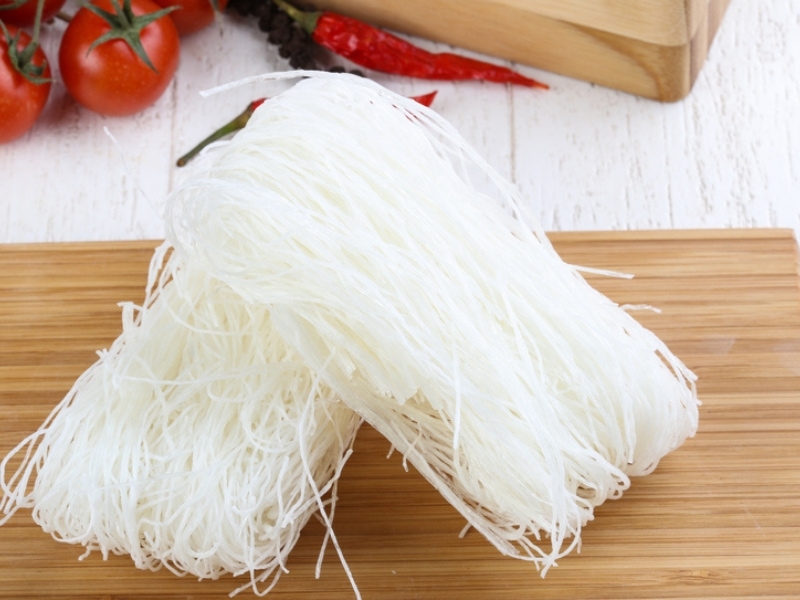
What Do Glass Noodles Taste Like?
Glass noodles don’t really taste like much. Despite the varying scratches, they have a neutral flavor.
It’s the texture, though, that makes them stand out. Glass noodles have a slippery, soft, and slightly chewy texture.
They soak up any sauces, broths, or dressings you add. So they’re a fantastic choice for all kinds of dishes.
Glass Noodles vs. Rice Vermicelli (What’s the Difference?)
Don’t let these noodles fool you!
Though they look similar to rice vermicelli, they are not the same.
For starters, the main ingredient in rice vermicelli is rice.
When cooked, rice doesn’t become transparent. So it won’t look glassy.
Next, rice vermicelli is always made with rice. Glass noodles can vary in the type of starches used.
But they ARE both gluten-free. If you’re sensitive to gluten, these noodles are great substitutions for wheat noodles.
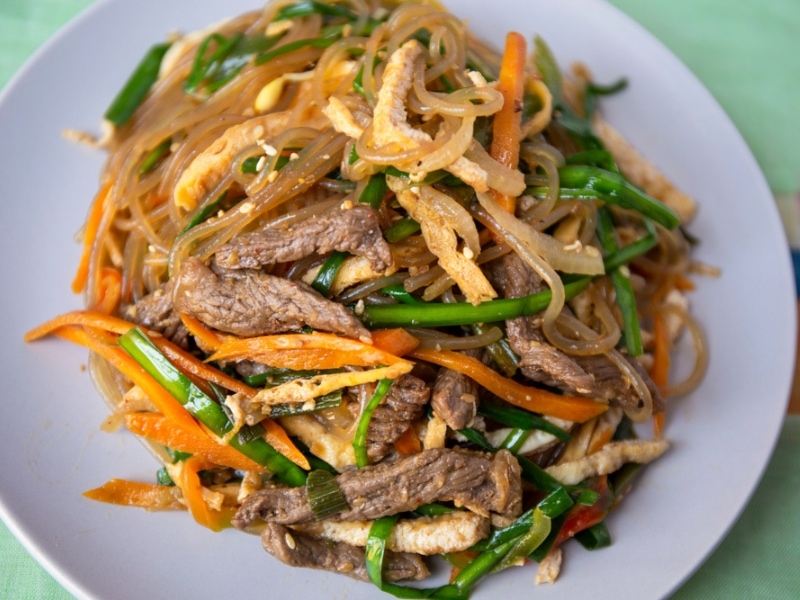
How to Cook Glass Noodles
Cooking glass noodles is very easy. Depending on the brand, though, the process can vary.
- One method is to boil them. A quick 3-5 minutes is all they need.
- You can also soak glass noodles in hot water for 10-15 minutes. Soaking is often preferred for controlling the texture and not overcooking.
For hot dishes like stir-fry or soup, you can instantly transfer them. But for dishes like salads- it’s best to chill the noodles first.
Glass Noodle Uses
With glass noodles, the sky is the limit!
Hot or cold, glass noodles are great in all kinds of dishes. It’s just a matter of what you’re in the mood for.
- Glass noodles are excellent for stir-fries, soups, and salads. Use them in fresh summer rolls or crispy spring rolls for more texture.
- For an authentic dish, try them in the traditional Korean stir-fry japchae. Or eat them cold in a Japanese salad like harusame.
- They’re fantastic in many Asian noodle dishes, too. Just pick out your favorite noodle sauce and stir-fry them with veggies.
You can also add any protein you like. Tofu, shrimp, pork, or chicken are just some ideas.
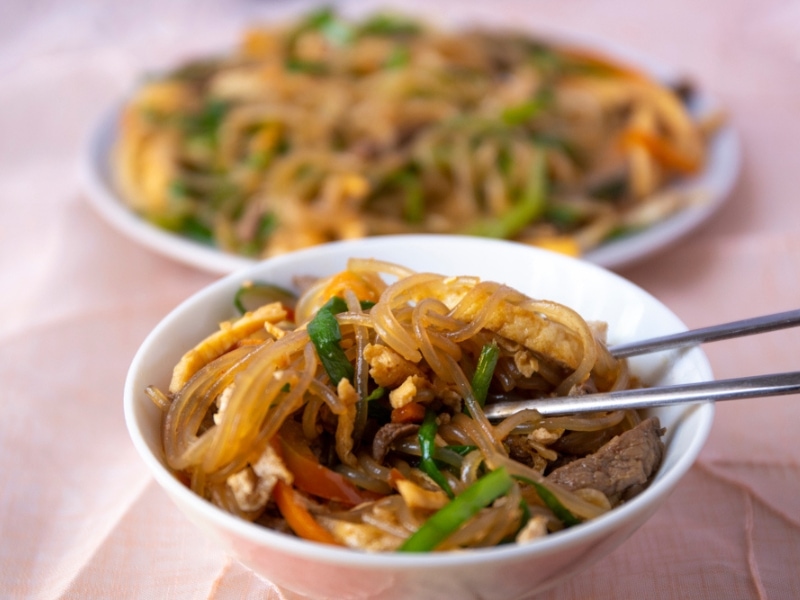
Where to Buy
Look for glass noodles in the Asian food section of your supermarket. Some stores may keep them in the gluten-free aisle.
You can also find glass noodles at a local Asian market or specialty store. Odds are these stores will carry more brands.
If all else fails, you can purchase glass noodles online.
How to Store
Store glass noodles like you would pasta.
- Keep the noodles in a cool, dry place.
- It is best to keep opened packages in a sealed container.
- You also want to keep them away from moisture.
Store them properly, and they’ll last for months. Although, with so many tasty recipes, I doubt they’ll last that long!
